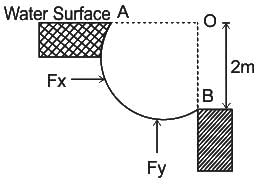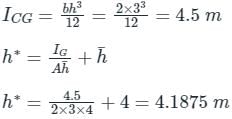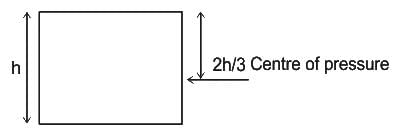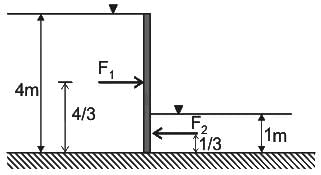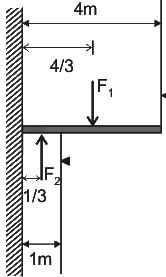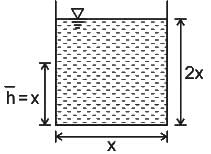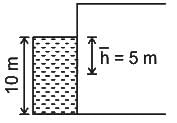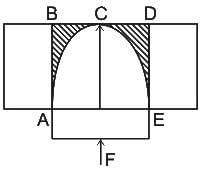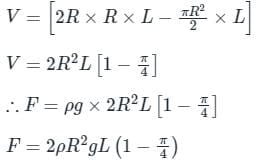Test: Pressure Force on Curved Surfaces - Civil Engineering (CE) MCQ
10 Questions MCQ Test - Test: Pressure Force on Curved Surfaces
One end of a two dimensional water tank has the shape of a quadrant of a circle of radius 2m. when the tank is full, the vertical component of the force per unit length on the curved surface will be
A vertical Gate 6 m × 6 m holds water on one side with free surface at its top. The moment about the bottom edge of the gate of the water force will be (γw is the specific weight of water)
A rectangular plane surface of width 2 m and height 3 m is placed vertically in water. What will be the location of center of pressure of the surface when its upper edge is horizontal and lies 2.5 m below the free surface of water?
The horizontal component of force on a curved surface is equal to the
The barrier shown between two water tanks of unit width (1 m) into the plane of the screen is modelled as a cantilever.
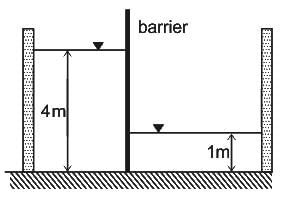
Taking the density of water as 1000 kg/m3, and the acceleration due to gravity as 10m/s2, the maximum absolute bending moment developed in the cantilever is ______ kN.m (round off to the nearest integer).
The force exerted by a static fluid on a surface either plane or curved, when the fluid comes in the contact with surface is called:
A house-top water tank is made of flat plates and is full to the brim. Its height is twice that of any side. The ratio of total thrust force on the bottom of the tank to that on any side will be:
Which of the following scientific principles/laws is related to flight in aeroplanes?
The water level in a dam is 10 m. The total force acting on vertical wall per metre length is:
Consider a frictionless, massless and leak-proof plug blocking a rectangular hole of dimensions 2R × L at the bottom of an open tank as shown in the figure. The head of the plug has the shape of a semi-cylinder of radius R. The tank is filled with a liquid of density ρ up to the tip of the plug. The gravitational acceleration is g. Neglect the effect of the atmospheric pressure.
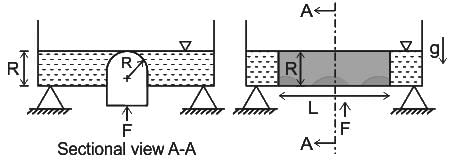
The force F required to hold the plug in its position is


